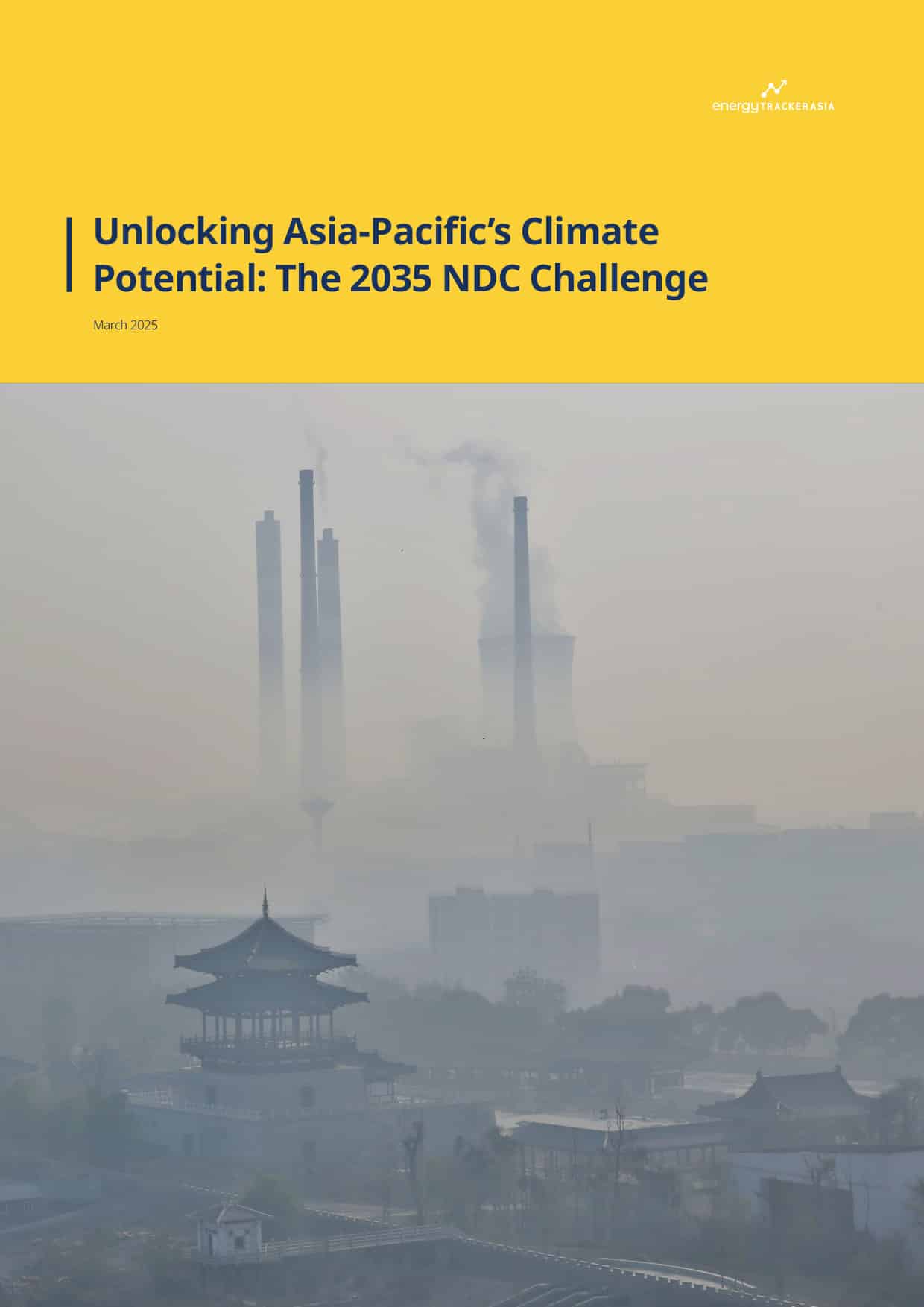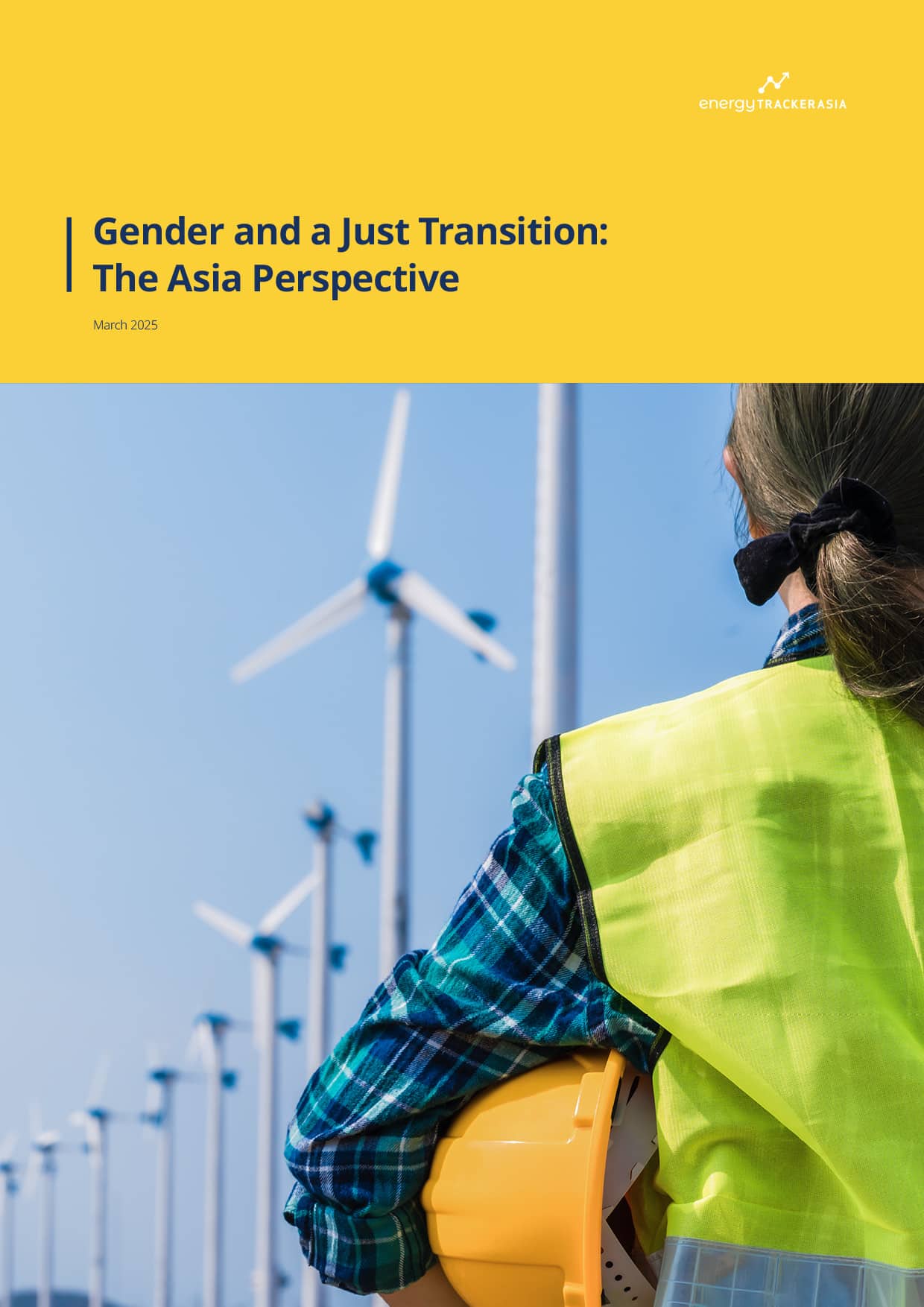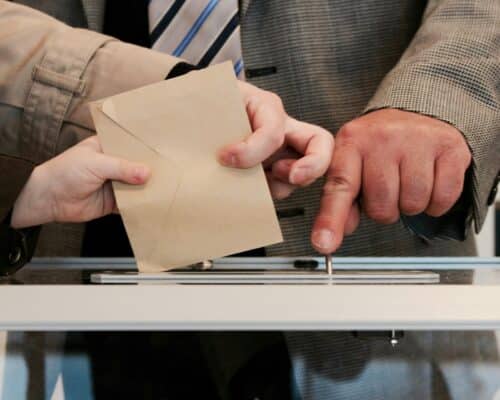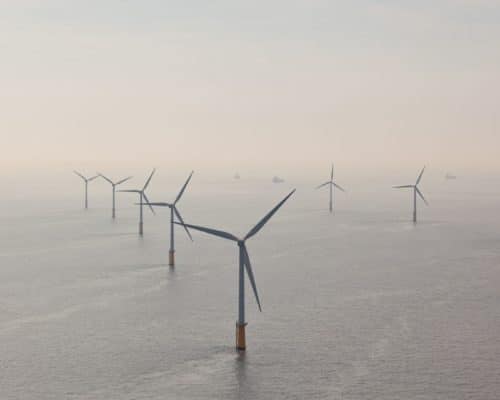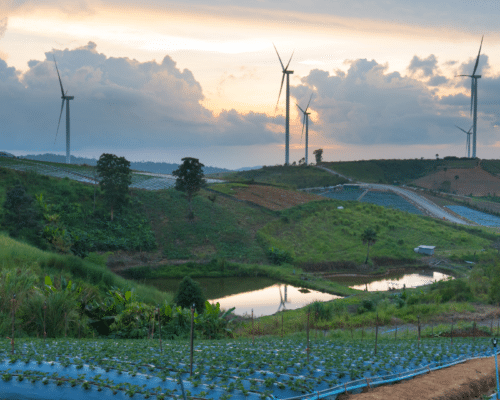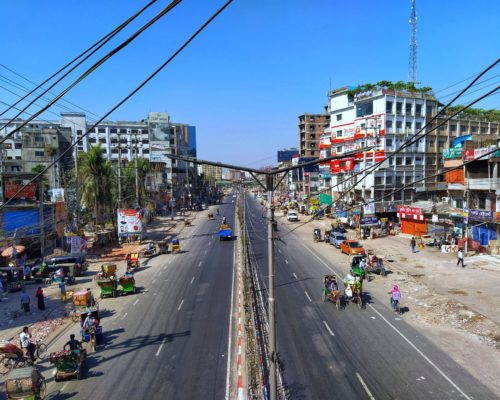Cost-cutting Solution for Companies in the Philippines
28 April 2025 – by Viktor Tachev
Companies in the Philippines have to bear some of the highest energy costs in Southeast Asia. Across ASEAN, the country is second only to Singapore in terms of energy expenses for businesses and households. According to Mark Go, a Filipino congressman and a representative of Baguio, the reasons that electricity prices in the Philippines are so high and so low in other countries are “first, fuel costs; second, energy policies; and third, the proportion of renewable energy in the energy mix”.
High Electricity Prices Increased Operational Expenses of Companies in the Philippines
The country’s high electricity prices have significantly increased the operational expenses of local businesses and foreign companies operating in the country, undermining their economic competitiveness. Seeking a way out, many businesses have turned their focus toward renewables as a cost-cutting alternative. Studies reveal that some companies have significantly lowered their energy costs through measures such as the Green Energy Option Program (GEOP). As a result, they have ensured business continuity, preserved jobs and avoided price hikes for their products and services to protect consumers. Last but not least, the move has helped them make a significant step in decarbonising their operations, ensuring a more conscious brand image and unlocking new business opportunities.
The Roots of the High Electricity Prices in the Philippines
“The Philippines continues to rely on imported fossil fuels such as coal for power and electricity production. This makes the Philippine electricity rates volatile and susceptible to fluctuations in foreign dollar exchange,” explained Rei Panaligan, president of the Center for Renewable Energy and Sustainable Technology (CREST), in an interview for Energy Tracker Asia.
Giancarlo Pocholo Enriquez, energy program lead at The Climate Reality Project Philippines, notes that other factors also contribute to the high power costs in the country.
“Distribution utilities or electric cooperatives like Meralco are often tied to long-term, expensive independent power producer (IPP) contracts that include ‘take-or-pay’ provisions. These contracts require payments regardless of whether electricity is delivered. In cases of planned or unplanned outages, utilities turn toward imported fossil fuels, which are prone to price fluctuations, foreign exchange costs and importation costs on the global market,” the expert explains. “Ultimately, these additional costs are passed on to consumers.”
According to Enriquez, this is possible due to the fuel pass-through provision in power contracts, also known as “pasaload”.
“It allows the companies profiting from fossil fuel imports — power producers and distributors — to transfer the impact of price fluctuations directly onto the end user, the average household or local business, which absorb the high costs.”
The Impact of High Electricity Prices on Households and Companies in the Philippines
The high energy costs have far-reaching consequences for many domestic companies, hindering their economic competitiveness and raising the cost of doing business. Experts warn that this has a negative impact not only on large-scale manufacturing companies with high energy consumption but also on micro, small and medium-sized enterprises (MSMEs), which are more sensitive to changes in their month-to-month operational expenses and can see their profit margins significantly reduced. To compensate, many of them have to cut jobs or pass the costs onto consumers by raising prices, making them less competitive to businesses with more resources.
The problem also affects foreign businesses operating in the country. According to the German-Philippine Chamber of Commerce and Industry (GPCCI), German companies identify high energy costs, inadequate infrastructure and supply chain disruptions as their top concerns that temper their confidence in the Philippine market. The GPCCI also notes that the Philippines is more prone to rising energy prices than other ASEAN markets and suffers more pronounced infrastructure bottlenecks.
According to Enriquez, the continuously high power costs raise businesses’ operational expenses, further deterring investments in the local manufacturing sector.
Importantly, the high electricity prices have a snowball effect on the entire economy and the participating stakeholders — from the average Filipino household to local and foreign businesses. As usual, the most vulnerable suffer the biggest economic difficulties as the costs of living increase further. As of 2023, 17.54 million Filipinos, or 15.5% of the population, lived in poverty, according to the Philippine Statistics Authority. However, a survey from the Social Weather Stations reveals that as of the end of 2024, 63% of Filipinos consider themselves poor — the highest result in the past 21 years. The rising cost of electricity pushes poorer families further into poverty, meaning that these households must often choose between paying for electricity and other essential needs like food, education and healthcare.
Renewable Energy and the Green Energy Option Program: A Way to Lower Electricity Prices for Companies in the Philippines
Under the GEOP, a voluntary program allowing consumers to purchase electricity directly from renewable energy power plants rather than relying on the procurement choices of utilities, companies with an electricity demand of at least 100 kilowatts can reduce their exposure to rising fossil fuel costs. By granting electricity consumers the option to switch to 100% renewable energy without infrastructure costs, the program allows companies to benefit from VAT zero-rated purchases of renewable energy and ensure predictable and lower energy expenses. As a result, they can enhance their profitability while at the same time aligning their operations with sustainability goals.
The “Enabling the Renaissance of Renewable Energy in the Philippines” report by the Climate Reality Project finds that through participation in GEOP, companies have reduced their dependence on volatile fossil fuel prices and cut electricity generation costs by an average of 34%. Some businesses report financial savings of up to 78%.
Upon examining 36 GEOP members, the analysis finds that they have collectively saved PHP 71.7 million (USD 1.27 million). These opportunities are critical, particularly for small and medium-sized enterprises, which are highly vulnerable to fluctuating operational costs.
Furthermore, thanks to the fact that businesses participating in the GEOP can ensure immediate emissions reductions, the analysed companies managed to slash their carbon emissions by an average of 79% and fast-track their journey toward net-zero goals. In total, since its introduction in 2021, GEOP has reduced the private sector’s emissions by at least 38.9 million kg of CO₂ equivalent.
“Beyond cost savings, many companies are pursuing sustainability or net-zero targets either through internal commitments or mandates from parent organisations. Shifting to renewable energy is often one of the most accessible and impactful ways to achieve these goals,” explains Enriquez.
This is especially important considering that the GPCCI notes that companies in the Philippines view efforts to meet sustainability requirements as a competitive advantage, with 43% (higher than the global average) identifying sustainability practices as a growth driver.
“Branding is one of the main drivers for businesses to adopt renewable energy, and it is marketed as part of their sustainability and eco-friendly programmes, greening initiatives, or support to SDG goals,” notes Panaligan.
“Growing pressure from supply chain partners is further driving businesses to transition to cleaner energy sources,” Enriquez adds.
Existing Barriers Necessitate Proactive Policy Action
In its dedicated study, the Climate Reality Project identifies various barriers preventing eligible companies from joining the GEOP. Among them are regional disparities in adoption and the limited renewable energy supply allocated to the GEOP.
According to Panaligan, other key barriers preventing eligible end-users from joining GEOP include low awareness and a lack of technical support.
“During our information campaigns and other events, potential GEOP participants expressed difficulties in switching due to this scarcity,” Enriquez explains. “Additionally, some SMEs are excluded from the program because they don’t meet the current eligibility requirement of a 100-kilowatt average monthly peak demand per electric meter.”
The Climate Reality Project notes that improvements in the accessibility and effectiveness of the GEOP and bringing existing barriers down can be achieved through targeted campaigns in underserved regions, improved infrastructure and stronger policy support.
“One such recommendation is adopting ‘retail aggregation,’ which would allow consumers to combine energy demand from multiple meters within a contiguous area to meet the current 100 kWh minimum peak demand threshold,” Enriquez notes. “This could expand access and enable more SMEs to benefit from GEOP.”
“We also call for measures to increase the availability of renewable energy under GEOP. This could be achieved by revisiting the 100% replacement power requirement or by adopting ‘volume matching’, enabling renewable energy suppliers to serve a broader base of customers more efficiently,” he adds.
When asked what the government must do to alleviate the pressure of high electricity costs on Filipino businesses and households, Panaligan outlined three key priorities. According to the expert, prioritising the development of Indigenous renewable energy resources and reducing reliance on imported fuels such as coal and LNG is the number one priority. Next, the government should continue to organise energy stakeholders’ forums and information sessions to increase the uptake of renewable energy. Last but not least, Panaligan says it is critical to promote innovative renewable energy financing for small and medium-sized businesses and homeowners.
Another important focus area is improving the administrative burden and the slow bureaucratic processes to ease clean energy adoption and project development.
“The Renewable Energy Law provides policy support and incentives that benefit mostly utility-scale projects. While the Energy Regulatory Commission enacted a policy supporting decentralized energy resources (DER) systems, the policy maintains tedious permitting requirements and a pricing methodology for export power that is unfair to RE owners. The DER guideline should therefore introduce a more flexible permitting process for micro-scale capacity (with 10 kW and below) and encourage financing and just pricing methodology for exported power,” Panaligan suggests.
Addressing the issue requires a multifaceted approach that is also centered around policy reforms that prioritise improvements in energy efficiency, reducing the reliance on fossil fuel imports, and investments in renewable energy, which can unlock 3 to 8 times the return for every dollar invested.
These solutions can be low-hanging fruit, requiring simple measures like streamlining bureaucratic processes and enhancing existing policy frameworks. Aside from improving the accessibility and effectiveness of the GEOP, this would also help improve access to financing, which Panaligan identifies as a major barrier to renewable energy adoption, especially for homeowners and MSMEs in the Philippines.
Meanwhile, easing the administrative burden and improving the renewable energy policy landscape to diversify funding sources and de-risk funding mechanisms can streamline the process of attracting new players in the energy sector and foster innovation.
Where To Next?
The 2025 elections in the country offer a prime opportunity for policymakers to capitalise on the momentum and showcase their determination to advance renewable energy adoption for businesses and households through supporting policies. The country already has strong renewables market fundamentals, ranking second among all emerging markets in BloombergNEF’s Global Climatescope 2024. While in 2021, it took the 30th position, ambitious policies such as auctions, feed-in tariffs, net metering schemes, tax incentives and limited restrictions on foreign ownership have dramatically improved the investment environment and turned the country into one of the most attractive emerging markets for renewable energy. As a result, the Philippines has attracted record levels of investments.
As investors continue to flee to the renewable energy sector in the Philippines to capitalise on its vast untapped potential, businesses will get even greater access to cheaper and cleaner energy, leaving fossil fuel reliance in the past. And with this, they would be able to become more competitive, contribute more to the economy and significantly improve their decarbonisation progress.
For businesses, switching to renewables is a strategic financial decision. As more companies transition to clean electricity, operational costs will decrease, boosting competitiveness. However, this can’t be possible without governmental support.
“To meet the rising demand driven by businesses transitioning away from fossil fuels, the Philippines must significantly accelerate investments in renewable energy,” Enriquez explains.
“At the same time, it is essential to ensure a just transition for the communities impacted by this expansion, safeguarding livelihoods and promoting inclusive development.”
by Viktor Tachev
Viktor has years of experience in financial markets and energy finance, working as a marketing consultant and content creator for leading institutions, NGOs, and tech startups. He is a regular contributor to knowledge hubs and magazines, tackling the latest trends in sustainability and green energy.
Read more